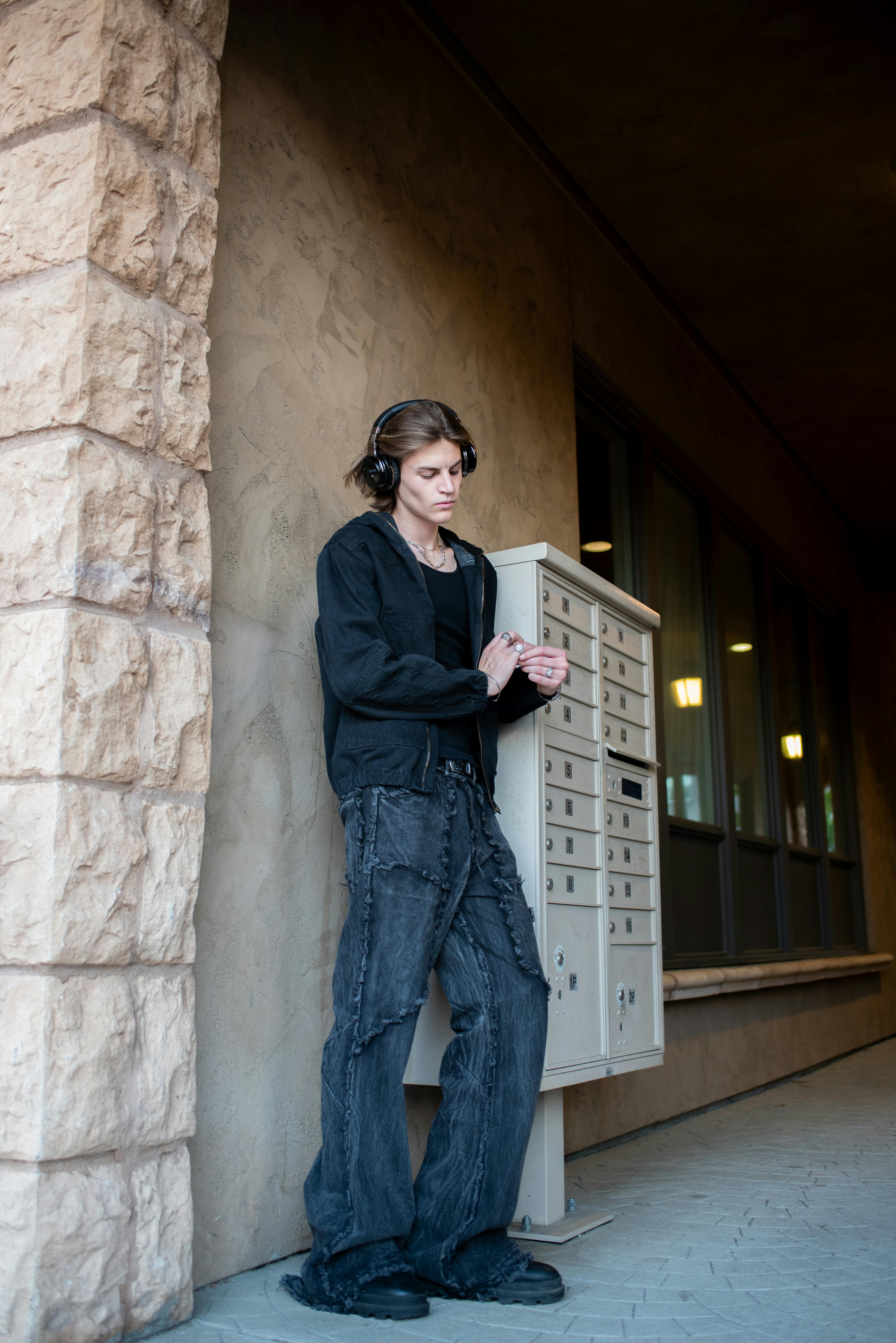Craniosacral Therapy is a gentle yet powerful approach that focuses on the manipulation of the bones in the skull, spine, and sacrum to improve the flow of cerebrospinal fluid and restore balance to the body. This therapy is believed to release restrictions and tensions within the central nervous system, promoting deep relaxation and allowing the body to naturally heal itself. By gently palpating various points on the head, neck, and back, a skilled practitioner can identify areas of imbalance and facilitate the release of tension, resulting in numerous benefits for physical and emotional well-being. Discover the transformative potential of Craniosacral Therapy and experience the profound effects it can have on your overall health and vitality.

Overview
Craniosacral Therapy is a gentle, hands-on approach that aims to enhance the body’s natural ability to heal itself. It focuses on the craniosacral system, which includes the bones of the skull, the spinal column, and the sacrum. This therapy is based on the belief that the craniosacral system has its own rhythm and that any restrictions in this rhythm can impact the overall health of an individual. By applying light touch and listening to the body’s rhythms, a trained therapist can help release any restrictions and promote balance and well-being.
What is Craniosacral Therapy?
Craniosacral Therapy is a non-invasive manual therapy that involves a therapist gently applying light touch to various parts of the body, particularly the skull, spine, and sacrum. Through this light touch, the therapist can assess the rhythm and movement of the craniosacral system and detect any imbalances or restrictions. The therapist then uses techniques to release these restrictions, which can promote the body’s natural healing processes. Craniosacral Therapy is a holistic approach that addresses not only physical symptoms but also emotional and mental well-being.
History and Origins
Craniosacral Therapy has its roots in osteopathy, a form of manual therapy developed in the late 19th century by Andrew Taylor Still. It was further advanced by William Sutherland, an osteopathic physician, in the early 20th century. Sutherland discovered that the bones of the skull are not fixed but can actually move in a subtle rhythm. This finding led to the development of cranial osteopathy, which later evolved into Craniosacral Therapy. Since its inception, Craniosacral Therapy has gained popularity and recognition as a complementary therapy in the field of healthcare.
Principles of Craniosacral Therapy
Craniosacral Therapy is based on three fundamental principles:
-
The body is a self-healing mechanism: It is believed that the body has an innate ability to heal itself. Craniosacral Therapy aims to enhance this self-healing mechanism by releasing restrictions and promoting balance in the craniosacral system.
-
The craniosacral system has its own rhythm: The craniosacral system has a rhythm and movement that can be felt through light touch. By detecting and assessing this rhythm, a therapist can identify any irregularities or restrictions within the system.
-
The body-mind connection: Craniosacral Therapy recognizes the connection between the physical body and the mind. It acknowledges that emotional and mental states can manifest as physical symptoms and aims to address the underlying causes of these symptoms.

Techniques
Light Touch
The use of light touch is a central technique in Craniosacral Therapy. The therapist gently places their hands on different parts of the body, particularly the skull, spine, and sacrum, to assess the craniosacral rhythm. This light touch allows the therapist to detect any restrictions or imbalances within the system and facilitates the gentle release of these restrictions.
Listening Skills
Listening skills are crucial in Craniosacral Therapy. The therapist uses their hands and attentive focus to listen to the subtle movements and rhythms of the craniosacral system. By honing their listening skills, the therapist can gain valuable information about the state of the system and guide their therapeutic approach accordingly.
Cranial Rhythmic Impulse
The cranial rhythmic impulse refers to the natural ebb and flow of the craniosacral system. It is characterized by a rhythmic movement that can be felt throughout the body. The therapist uses this impulse as a reference point to assess the health and vitality of the system. By working with the cranial rhythmic impulse, the therapist can help restore balance and promote the body’s self-healing mechanisms.
Sensing Tissue Motility
Sensing tissue motility involves perceiving micro-movements within the tissues of the body. These movements are indicators of the body’s overall health and vitality. Through their developed palpation skills, the therapist can sense the subtle changes in tissue motility and address any issues or restrictions that may be affecting the craniosacral system.
Energy Work
Energy work is an integral part of Craniosacral Therapy. The therapist focuses on the energetic flow within the body and works with the client’s energy field to promote balance and healing. This may involve techniques such as Therapeutic Touch or Reiki, which aim to channel and rebalance the client’s energy.
Benefits
Pain Relief
Many individuals seek Craniosacral Therapy for pain relief. By releasing restrictions within the craniosacral system, this therapy can alleviate both acute and chronic pain. It has been found to be particularly effective in relieving headaches, migraines, and neck and back pain.
Stress Reduction
Craniosacral Therapy provides a deeply relaxing experience that can help reduce stress and promote a sense of well-being. The gentle touch and rhythmic movements used in this therapy can help calm the nervous system and induce a state of deep relaxation, allowing the body to naturally release tension and stress.
Improved Sleep
For individuals struggling with sleep disorders or insomnia, Craniosacral Therapy may offer relief. By promoting relaxation and balancing the craniosacral system, this therapy can help regulate sleep patterns and improve the quality of sleep.
Enhanced Well-being
Craniosacral Therapy is not just about addressing physical symptoms; it also focuses on promoting overall well-being. By addressing restrictions in the craniosacral system and restoring balance, this therapy can enhance vitality, increase energy levels, and improve overall quality of life.
Emotional Release
Emotional release is another benefit of Craniosacral Therapy. The gentle touch and supportive presence of the therapist can create a safe space for clients to release emotional tensions and traumas. This can lead to a sense of emotional healing and greater self-awareness.

Conditions Treated
Headaches and Migraines
Craniosacral Therapy has been found to be effective in reducing the frequency and intensity of headaches and migraines. By releasing tension and restrictions in the craniosacral system, this therapy can alleviate headache symptoms and provide long-lasting relief.
Chronic Neck and Back Pain
Many individuals suffering from chronic neck and back pain have found relief through Craniosacral Therapy. By addressing the underlying imbalances in the craniosacral system, this therapy can help alleviate pain and restore proper alignment and function to the spine.
TMJ Dysfunction
Temporomandibular joint (TMJ) dysfunction can cause pain and discomfort in the jaw, head, and neck. Craniosacral Therapy can help release tension and restrictions in the TMJ area, providing relief from TMJ-related symptoms and promoting proper alignment and function of the jaw.
Fibromyalgia
Fibromyalgia is a chronic condition characterized by widespread pain and tenderness. Craniosacral Therapy has shown promising results in reducing pain and improving quality of life for individuals with fibromyalgia. By releasing restrictions and restoring balance in the craniosacral system, this therapy can help alleviate symptoms and improve overall well-being.
Traumatic Brain Injury
Craniosacral Therapy has been found to be beneficial for individuals with traumatic brain injuries. By addressing the imbalances and restrictions in the craniosacral system, this therapy can help support the healing process, reduce symptoms, and improve cognitive function.
Research and Evidence
Limited Scientific Studies
While scientific studies on Craniosacral Therapy are limited, there is some research that supports its effectiveness in certain conditions. However, more robust and large-scale studies are needed to establish a solid scientific basis for this therapy.
Anecdotal Evidence
Anecdotal evidence, consisting of personal testimonials and case studies, suggests that Craniosacral Therapy can be beneficial for many individuals. Many clients report positive outcomes and improvements in their condition after receiving this therapy.
Placebo Effect
It is important to consider the placebo effect when evaluating the effectiveness of Craniosacral Therapy. The power of belief and the therapeutic relationship between the client and therapist can contribute to positive outcomes. However, it is crucial to continue scientific research to differentiate the effects of the therapy itself from the placebo effect.

Training and Certification
Prerequisites for Training
Various organizations and schools offer training programs in Craniosacral Therapy. While prerequisites may vary, most programs require applicants to have a background in healthcare, such as being a licensed healthcare practitioner or a bodywork professional.
Certification Bodies
There are several certification bodies that offer accreditation for Craniosacral Therapy practitioners. These bodies ensure that practitioners meet certain standards and adhere to ethical guidelines in their practice.
Continuing Education
Continuing education is essential for Craniosacral Therapy practitioners to further enhance their skills and stay updated with new developments in the field. Various workshops, seminars, and advanced training programs are available to support ongoing professional growth.
Integration with Other Therapies
Massage Therapy
Craniosacral Therapy can complement massage therapy by addressing the specific imbalances and restrictions within the craniosacral system. These two therapies can work together to provide a comprehensive approach to healing and relaxation.
Chiropractic Care
Craniosacral Therapy and chiropractic care share similar principles in promoting balance and health in the body. The combination of these therapies can provide a synergistic effect in addressing musculoskeletal issues and promoting overall well-being.
Physical Therapy
Craniosacral Therapy can be integrated into physical therapy sessions to enhance the effectiveness of the treatment. By addressing the craniosacral system, this therapy can support the rehabilitation of musculoskeletal injuries and contribute to the overall success of physical therapy interventions.

Safety and Precautions
Pregnancy and Craniosacral Therapy
Craniosacral Therapy is generally safe for pregnant women and can provide relief from common pregnancy-related discomforts. However, it is important for pregnant individuals to inform their therapist about their pregnancy and any specific concerns they may have.
Invasive Procedures
Craniosacral Therapy is a non-invasive therapy, and practitioners do not perform any invasive procedures. It is gentle and safe for individuals of all ages.
Potential Risks
While Craniosacral Therapy is generally safe, there may be some risks associated with the therapy. These risks are rare and can include temporary aggravation of symptoms or emotional releases that may occur during or after a session. It is important to communicate openly with the therapist about any concerns or discomfort experienced during the treatment.
Client Experiences
Personal Testimonials
Many individuals have shared their positive experiences with Craniosacral Therapy. They often report improvements in their physical symptoms, reduction in pain, enhanced relaxation, and increased overall well-being.
Case Studies
Case studies provide detailed accounts of specific individuals’ experiences with Craniosacral Therapy. These studies reveal how this therapy has helped individuals with various conditions, such as chronic pain, post-traumatic stress disorder, and neurological disorders.
Criticism and Controversy
Lack of Scientific Validity
One criticism of Craniosacral Therapy is the lack of scientific evidence to support its mechanisms and effectiveness. Skeptics argue that the subtle nature of the therapy makes it difficult to measure and quantify its effects scientifically.
Disagreements within the Field
Another area of controversy within the field of Craniosacral Therapy is the differing opinions and approaches among practitioners. There are variations in technique and philosophy, which can sometimes lead to disagreements and debates within the profession.
In conclusion, Craniosacral Therapy is a gentle and non-invasive therapy that aims to promote the body’s self-healing mechanisms by addressing the craniosacral system. Despite the limited scientific evidence, many individuals have reported positive outcomes and improvements in various conditions. It can be integrated with other therapies and has the potential to provide pain relief, reduce stress, improve sleep, enhance well-being, and support emotional release. However, it is important to approach Craniosacral Therapy with an open mind and consult with a qualified therapist to determine its suitability for individual needs. Further research is needed to fully understand the mechanisms and effectiveness of this therapy.
